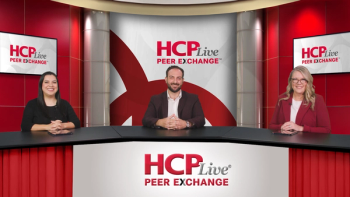
Characteristics of Type 2 Inflammation and the Impact of Itch
Joshua Zeichner, MD, and Vikash Oza, MD, discuss characteristics of type 2 inflammation and the impact of itching on pediatric patients with atopic dermatitis.
Episodes in this series

Joshua Zeichner, MD: Hello, and thank you for joining us for this Dermatology Times® Around the Practice series. I’m Dr Joshua Zeichner. I’m an associate professor of dermatology and the director of cosmetic and clinical research in dermatology at Mount Sinai Hospital in New York, New York. In this series, I’ll be moderating a panel discussion and a case study review on new directions in the management of atopic dermatitis.
Joining us are Dr Brittany Craiglow, a dermatologist at the Dermatology Physicians of Connecticut and an adjunct associate professor at Yale School of Medicine in New Haven, Connecticut; Dr Lisa Swanson, a pediatric dermatologist at St. Luke’s Health System in Meridian, Idaho; Dr Vikash Oza, the director of pediatric dermatology at NYU Langone Health and an associate professor of dermatology and pediatrics at the NYU Grossman School of Medicine; and Dr Raj Chovatiya, an assistant professor of dermatology at Northwestern University Feinberg School of Medicine in Chicago, Illinois. Welcome, everybody.
In addition to discussing the newest updates in the field, we’ll also be exploring 3 patient cases. Let’s get started. Let’s start by talking about the characteristics of type 2 inflammation. What’s the role of cytokines in the development of inflammation in atopic dermatitis? Vikash, tell us about this.
Vikash Oza, MD: As with any inflammatory disorders, the specific types of cytokines play a large role. A lot of times we parallel atopic dermatitis with psoriasis, and we’ve learned with all these new biological therapies in psoriasis that having a target for specific cytokines can make a huge impact on disease control. That’s true in eczema. We think of eczema as this classical type 2 inflammatory disorder, so certain key cytokines play a large role in driving the disease state. We know about the type 2 specific ones, IL-4 and IL-13, with specific interest in IL-13 playing a large role in atopic control. Now that Dupixent [dupilumab] has been out for a while, we’ve learned how targeting those cytokines can make a huge difference in terms of the disease state.
It’s also true that when we look at different patient populations, we see Th2 and Th22 upregulated in young children, profiles of Th1 in older patients, and Th17 in East Asian patients. There are variations in the immunologic profile across ethnic groups and age, but at the core, we still see an important role that Th2 cytokines play because we know that dupilumab is pretty effective across that group. Even though we learn about different signatures and immune pathways, there’s a lot of crosstalk, and they don’t exist in silos. It has been the advancement of our basic science understanding of the immunopathogenesis that has helped drive this flood of new potential therapies that we have coming to the clinic.
Joshua Zeichner, MD: It’s so interesting that aside from the type 2 cytokines being involved in the inflammation that we see, there are also structural changes in the stratum corneum and skin barrier. Talk to us about that a little.
Vikash Oza, MD: We see a tight interplay between so many elements, whether we’re talking about our lipid bilayer and how successful we are in controlling trans epidermal water loss. When we downregulate the inflammatory pathways, we see recovery of that. When we’re talking about the microbiome, which is so critical in atopic dermatitis pathogenesis, and the colonization of staph aureus, targeting those inflammatory cytokines help recuperate a more diverse microbiome. There’s a very tight interplay between the complex biology of the bilayer as well as our microbiome and the inflammatory cascade that lies underneath.
Joshua Zeichner, MD: What about itch? Itch is a huge issue in atopic and nonatopic patients, but we know that eczema-related itch is different from other types. Talk to us a little about type 2 cytokines and eczema-related itch.
Vikash Oza, MD: There are certain cytokines that play an important role in driving itch, with IL-31 being 1 of them. In clinical trials, we have agents targeting IL-31 to help reduce itch. Certain therapies may help reduce itch quicker. We know that with our JAK inhibitors compared with dupilumab. Clearly, a lot of the inflammatory cascades help drive our signal for itch. As medical students, we learned about the itch-scratch cycle, which disrupts your skin. Altering that in and of itself helps perpetuate inflammatory cycles.
Joshua Zeichner, MD: We definitely see that systemic treatments for our patients with atopic dermatitis using agents that address IL-4 and IL-13 help that inflammatory process and significantly reduce itch.
Transcript Edited for Clarity
Newsletter
Access practical, evidence-based guidance to support better care for our youngest patients. Join our email list for the latest clinical updates.











